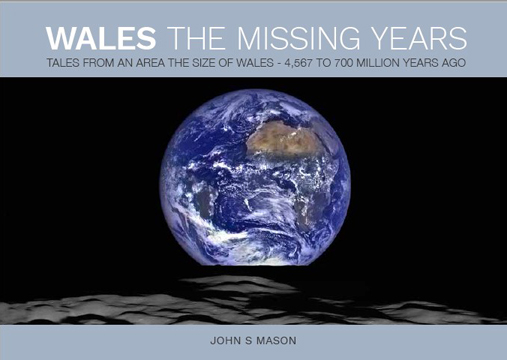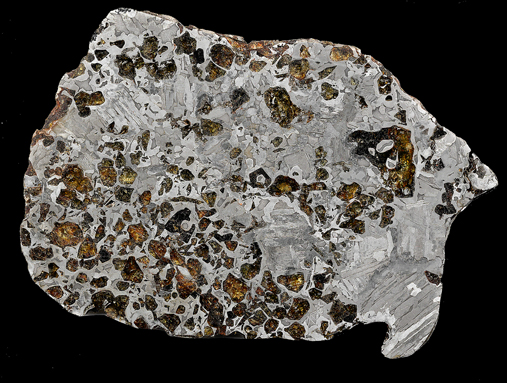New book: Wales - The Missing Years - a celebration of origin
When does Plan A become Plan B? When you have an experimental climate change-relevant book selling well at high-footfall visitor centres, are planning more similar ventures and bang! A deadly pandemic comes along.
March 2020 saw all non-essential shops in the UK being closed down, including all of my non-online high-footfall sales outlets. So much for Plan A! But with some support available, I decided to go for the big one of the series. It was to become my Lockdown Project.
Wales - The Missing Years, as the Lockdown Project in turn became, is the second book in a series that began with The Making of Ynyslas (2019), the latter title all about the deglaciation and accompanying 120 metres of sea level rise following the last glacial maximum. The thinking behind that book was described in an earlier Skeptical Science blog-post here. But it only covers the last 25,000 years or so. The Lockdown Project goes a lot further back in time.

The oldest rocks we know of, here in Wales, are only about 700 million years old, whereas Planet Earth was formed more than 4,500 million years ago. What happened during that lengthy gap, making up those missing years? The answer is that almost everything we all take for granted in our daily lives came into being, bit by bit and often by sheer good fortune. Stuff like breathable air, drinkable water, a mostly life-supporting climate, the diverse range of habitats created by plate tectonics and, indeed, life itself. Without those critically-important events back in our ancient past, we simply wouldn't be here.
Based on the latest peer-reviewed science, Wales - The Missing Years guides the reader on a journey through that deep time, exploring the origins of those vital-to-existence features of our home planet. Long before the first multicellular life-forms made the transition from living in the sea to colonising the land, Earth had already been transformed - or, if you like, Terraformed. Wales may have been late on the scene in geological terms, but every atom and molecule making up the country, its rocks, seas, skies and diverse inhabitants alike, owes its origin to the Missing Years. This, then, is a story that belongs to everyone in Wales and, indeed, on Earth.
As I delved into the peer-reviewed literature and talked to various scientists about the diverse topics covered in the book, that singular theme of incredibly good fortune kept appearing time and time again. As a geologist, I already had the advantage of familiarity with some of the subject-material, such as plate tectonics - an area anybody active in topics such as igneous rocks and mineralisation will routinely consider as they unravel the geological mysteries of their research-area. But understanding the formation of Earth and its subsequent differentiation into a metallic core and a silicate mantle, and how the stony-iron meteorites - the pallasites - came into being, was, for me, like exploring another dimension altogether. Yet without that metallic core, its outer part molten and generating Earth's magnetic field, once again the planet would have likely remained lifeless, its surface ravaged by the Solar winds and cosmic rays. Time after time, everything went in a way that would ultimately make it possible for humans to evolve.

Above - a pallasite stony-iron meteorite slice, polished and lightly etched. The air of mystery about such space-rocks is echoed in the literature, with more than one competing hypothesis as to their origin. Image: author.
Lots of disasters happened along the time-line, of course. Asteroid impacts, Large Igneous Province-type volcanic eruptions and so on: it's dangerous out there, on multi-million year timescales. Even the emergence of widespread photosynthetic microbial life was not without consequences: it allowed Earth's atmosphere to become oxygenated, which was bad news for the anaerobic community, massively reducing the ecological niches available to them. What did impress me - and I've gone into this before here at SkS - was that after each and any such drama, Earth recovered, time and time again.
That theme of healing is so recurrent that it makes me doubt if our worst excesses will, given enough time, wipe out all life on Earth. Even if we screw up so totally as to make large parts of the planet uninhabitable, the place will bounce back. It always has: it just needs a few million years to do so. But in celebrating all the things that happened in order to provide us with our only home, it is my hope that the realisation will spread among readers that we live here by geological, biochemical and cosmological consent. Earth is a complex system, its processes all interlinked in diverse and long-established webs, some of which are more sensitive to damage than others, but none of which should be taken for granted.
Wales - The Missing Years (plus The Making of Ynyslas) are available online at a number of outlets. Details and links to the outlets are on my website, here:
https://www.geologywales.co.uk/interpretation.htm
Feedback about The Making of Ynyslas, now out for some time, has been interesting and strongly suggests that weaving climate science into a narrative of place is effective as a tool in our portfolio of communication techniques. My evidence is that it particularly works for people of a non-scientific but interested-in-nature background. That's a very big demographic indeed. Climate scientist Jennifer Francis was quick to spot the opportunity. In an email exchange, she said to me,
"Wow, John - This is just spectacular!! Wouldn't it be cool to have one of these for a representative sampling of special places around the world! .... I agree it's a fantastic communication strategy and would reach new audiences....."
So why not take that advice? Wherever you are in the world, there will be popular locations who owe part or all of their existence to climate change, and especially along coastlines. Calling all authors and budding authors: here is your chance to inform many people! Why not give it a go? It all counts!
Posted by John Mason on Tuesday, 8 February, 2022



